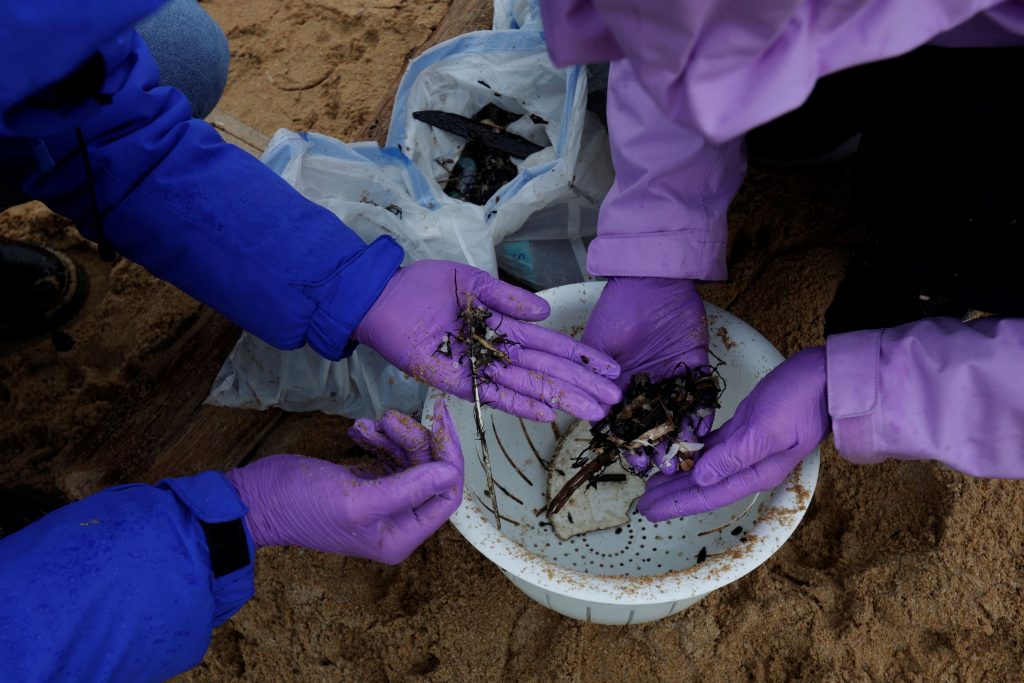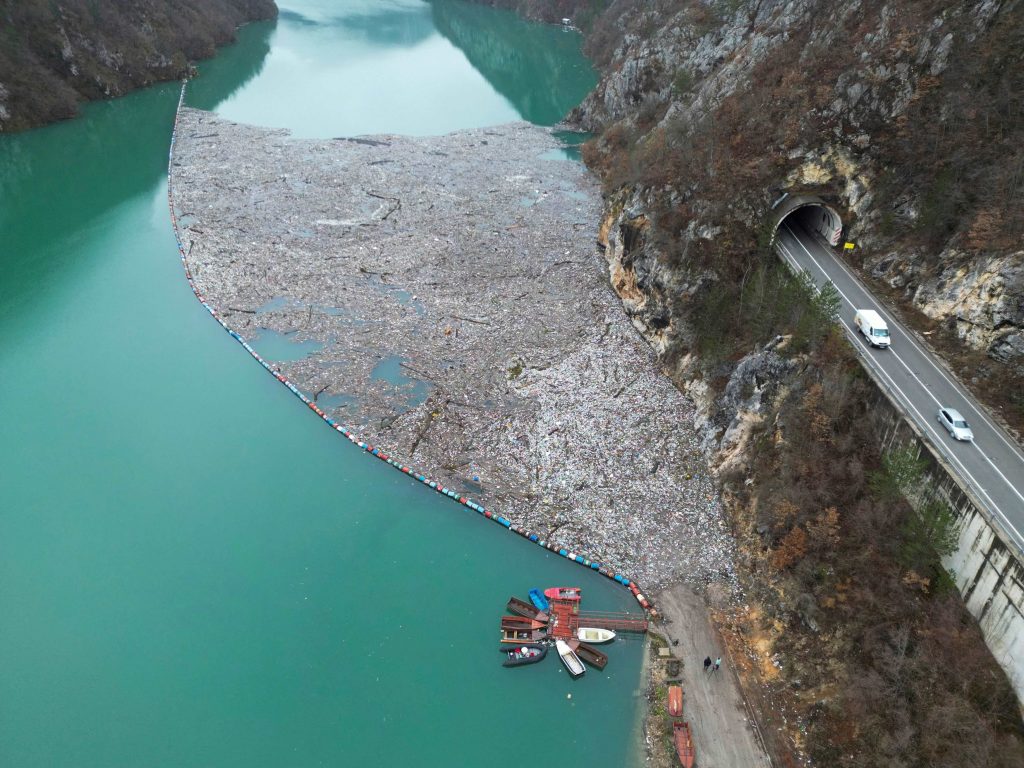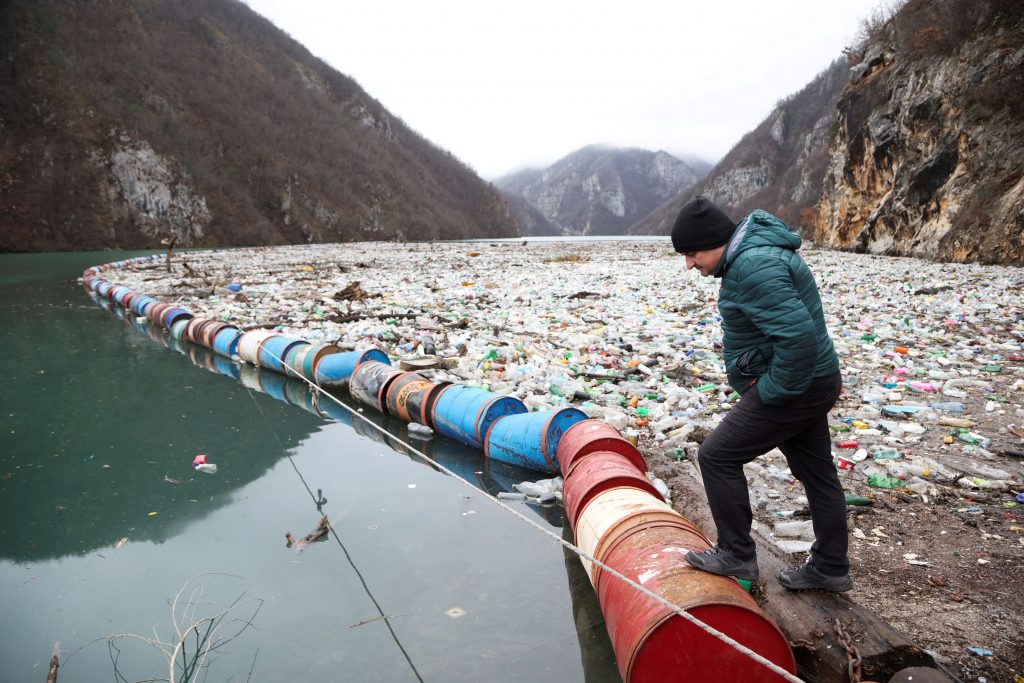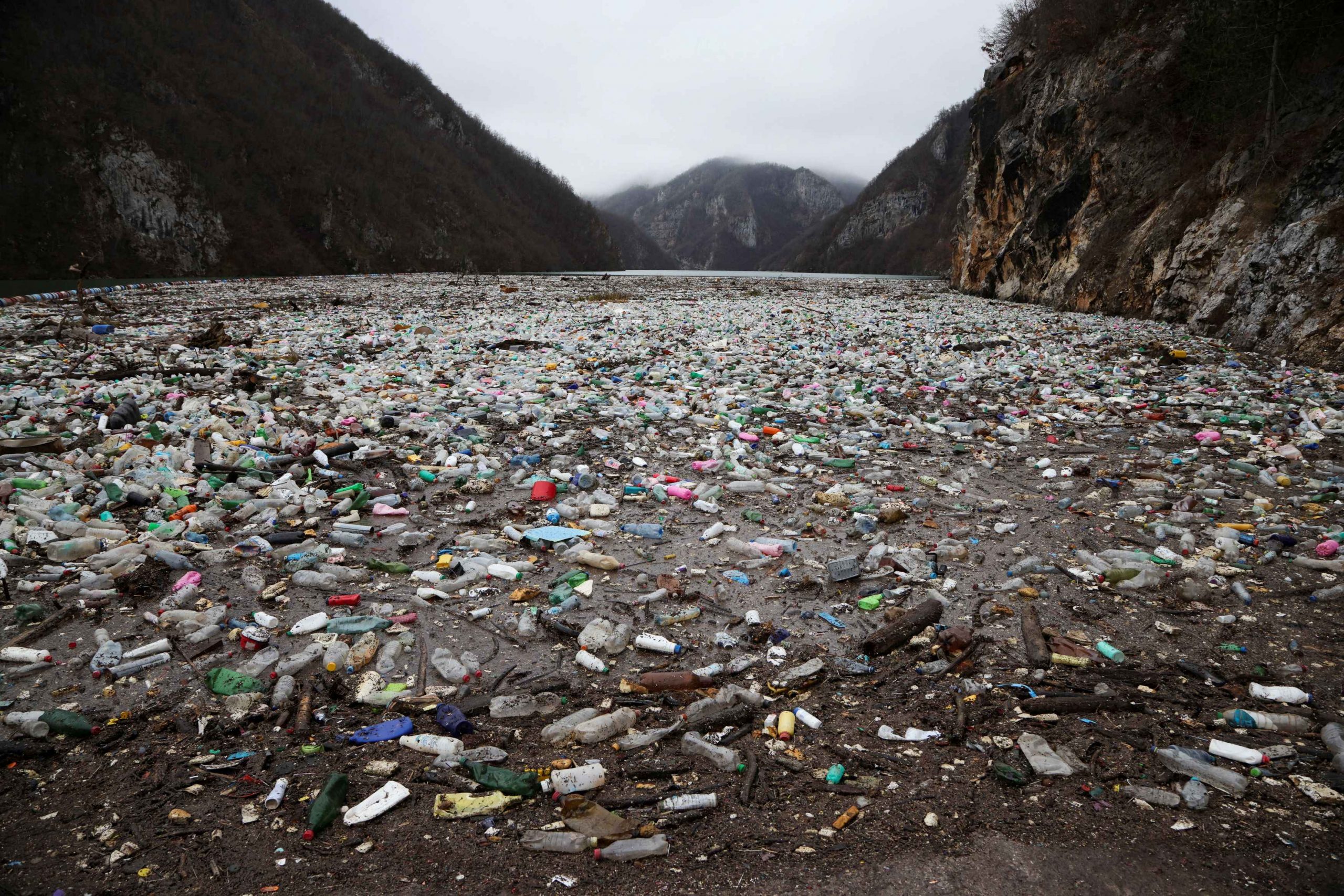This past week, media was preoccupied with several extreme cases of plastic pollution which highlighted how rife of a problem it is, as well as how efforts to reduce the world’s dependency on plastics must be significantly accelerated.
Microplastics and Nanoplastics in Bottled Water
A study on microplastics published in the Proceedings of the National Academy of Sciences set alarm bells ringing as it revealed that bottled water in the U.S. contains up to 100 times more plastic than previously estimated.
The researchers from Colombia and Rutgers found there to be 110,000 to 370,000 plastic particles per liter of water, 90% of which are nanoplastics and the rest microplastics. They highlighted the need for more research on the potential health impacts of nanoplastics, as their presence was significantly higher than expected, and they are not naturally flushed out of the body, as are microplastics.
Plastic Pellets Spill off Spain
Meanwhile, millions of plastic pellets used to produce items like water bottles have washed up on the shores of Galicia in northwest Spain, according to Reuters. Hundreds of volunteers sifted through the sand in an effort to remove as many pellets as possible.

Women clean up the sand of Vilar beach after millions of plastic pellets washed up on the Spanish northwestern Galicia region, in Ribeira, Spain, January 8, 2024. REUTERS/Miguel Vidal

Women clean up the sand of Vilar beach after millions of plastic pellets washed up on the Spanish northwestern Galicia region, triggering environmental concerns and a political blame game in Ribeira, Spain, January 8, 2024. REUTERS/Miguel Vidal
“A spillage of this type of material causes major problems to our oceans…millions of pellets are now depositing in our sea and our beaches, affecting marine and terrestrial flora and fauna,” said the Mayor of Ribeira, Luis Perez. The pellets are believed to have come from a container that fell into the sea off the coast of Portugal a month ago.
Floating Mass of Plastics in Bosnia & Herzegovina
And finally, images from the Drina river canyon in Visegrad, Bosnia & Herzegovina, show a giant 5,000 cubic meter floating waste dump. The garbage, which largely consists of plastic bottles originating upstream and sometimes even in different countries, floats downriver to Visegrad, where it is stopped by a makeshift barrier of oil drums designed to protect a nearby dam.


Environmental activist Robert Oroz looks at the floating rubbish dump in the canyon of the Drina river, near the town of Visegrad, Bosnia and Herzegovina January 5, 2024. REUTERS/Amel Emric TPX IMAGES OF THE DAY
The waste is one of the first things tourists see when they arrive in the area, which has a negative impact on tourism, according to reports at Reuters. It is either sent to a nearby landfill when the barrier reaches capacity or, unfortunately, burned. The toxic fumes released into the atmosphere generate even more risks to public health.
A Global Problem and a Robust Plastics Market
To put the above examples of plastics pollution into a broader context, the United Nations (UN) reports that 430 million tons of plastic is produced around the world each year, two-thirds of which is used to make single-use items like shopping bags, cups and packaging material. “Every day, the equivalent of over 2,000 garbage trucks full of plastic are dumped into our oceans, rivers and lake,” says the UN, and 85% of all marine waste is plastics.
In the Mediterranean, 730 tons of plastic waste enter the sea every day, accounting for 95–100% of its floating litter and over 50% of its seabed litter, according to the United Nations Environment Program Mediterranean Action Plan (UNEP/MAP). As for microplastics, they are mostly derived from textiles and clothing, with the greatest concentration of microplastics ever found on the seabed located off the coast of Italy. As for the litter on our beaches, over 60% is also from single-use plastics.
What happens to plastics once they enter our waterways and oceans, and how they re-enter the food chain, has become more apparent over the years as pictures of fresh-caught fish with plastics in their stomachs circulate the internet. “Every marine turtle species, and nearly half of all surveyed seabird and marine mammal species” have been found with plastic remnants in their digestive tracks, according to the United Nations Environment Program.
Research also shows that people consume microplastics through their food and water. They have been found in human lungs, livers, spleens and kidneys. They even show up in our blood, attached to the outer membranes of red blood cells, whose ability to transport oxygen they could be compromising, according to a study in the Environment International journal last year.
And while international concern is growing about the dangers that plastic pollution presents to humans and the ecosystem, the plastic market, which was valued at 712 billion U.S. dollars in 2023, is projected to grow to 1,050 billion U.S. dollars by 2033. The numbers paint a stark picture of the world’s prospects of reducing its dependency on plastics.
Greece Joins the Battle
Yet many international organizations and non-profits have entered the ring to clean the marine and coastal environment, promote alternatives in an effort to reduce plastic consumption, and to lobby for policies and frameworks to rein in the use of plastics in general, and single-use plastics in particular.
Regarding global frameworks to harmonize the multiple initiatives and policies focused on plastics reduction throughout the world, the Intergovernmental Negotiating Committee of the UN is working on establishing a legally-binding instrument on plastic pollution with a focus on marine environments, which is expected to be finalized in 2024.
In Greece, the 73-meter MV Typhoon, owned by the AC Laskaridis Foundation, can be seen supporting research and cleaning beaches of waste. It has collected 80,000 kg of litter since 2019 and is also equipped to address in-water marine pollution from detergents, fertilizers and sewage. Moreover, beach and coastal zone clean-ups now abound, with the Hellenic Marine Environment Protection Agency (HELMEPA) offering methodological assistance.
Still, more work needs to be done on reducing the consumption of plastics, at least in regard to the EU Directive on single-use plastics. The Directive says that single-use plastic products cannot be placed on the markets of EU Member States wherever sustainable alternatives are easily available and affordable, and that efforts must be made to reduce the consumption of plastics that fall outside of the scope of the Directive.
In following, Greece passed a law banning ten types of single-use plastics—including cutlery, plates, straws, Styrofoam containers and cups, beverage stirrers and plastic cotton swabs— as of 2021. The Greek government has said it hopes to reduce single-use items by 30% by 2024 and 60% by 2026, but a more aggressive approach beyond what is required by the law is needed.
In the meantime, however, non-profits remind citizens of their power to drive change and offer educational tools to guide the way. UK-based nonprofit Common Seas created a program called “Clean Blue Greece, which includes practical and science-based strategies designed to help the average Greek citizen make smart choices in their efforts to transition off single-use plastics.
This article is part of a special thematic series covering key issues related to the 9th Our Ocean Conference, which will be hosted by Greece this year and held in Athens from April 15–17 at the Stavros Niarchos Center.



